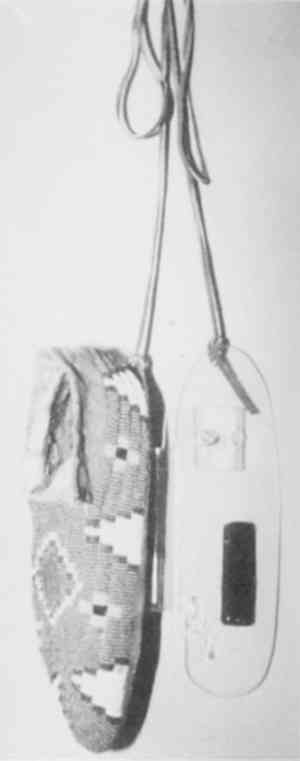THE DILEMMA OF INTERPRETING AND CONSERVING THE PAST AT NEW YORK STATE'S HISTORIC SITESDEBORAH LEE TRUPIN, DAVID BAYNE, MARIE CULVER, NANCY DEMYTTENAERE, HEIDI MIKSCH, & JOYCE ZUCKER
5 INTERPRETATIONThe majority of the bureau's exhibited collections are displayed in period room settings. Unfortunately, this method of interpretation can place collections at great risk. Security concerns are met in various ways: by placement of vulnerable collections out of reach, regardless of their historical location; by limited use of monofilament line and museum wax to secure small objects discreetly; and by watchful interpretive staff guiding relatively small tours. These efforts supplement more sophisticated electronic security systems. In addition to security concerns, interpretation of period rooms results in other losses. Historic carpeting—though protected by tour runners—is still walked upon. Historic drapery hangs in windows, exposed to varying light levels, dust, and gravity. No matter how much care is taken, a degree of deterioration occurs through the use of artificats as furnishings. Those who work with historic presentations accept the premise that the problems inherent in open display should be weighted against the bureau's commitment to present history accurately and to assure that the artifacts owned by the State of New York remain accessible to visitors. Many difficult display problems have been solved using nonintrusive structural reinforcement to mitigate stress and permit historically accurate presentations. Johnson Hall at Johnstown is an example. Sir William Johnson (1715–74), the British superintendent of Indian affairs for the Six Nations, was host to hundreds of Native Americans and included their cultural material in his home. Documents among his
Other objects also lend themselves well to the addition of discreet structural support. Due to distortion of the wooden frame of a pianoforte at Clermont, near Germantown, its legs can no longer support the body of the piece. Furniture conservators fabricated a metal support and painted it to blend with the wall, woodwork, and flooring. The support now safely and convincintly supports the pianoforte. At Olana, conservators have made individual mounts for all the objects displayed on a map case in Frederic E. Church's studio to allow his arrangement of intentional clutter to be presented safely. Recently, the bureau has introduced another facet of interpretive experience in some period rooms. Staged scenarios of well-researched aspects of daily life are used to provide insight into the life-styles of the people who occupied these homes. While collections are displayed in ways that more readily show how they would have been used, this approach can place additional stress on objects and put them at greater risk of damage. The success of scenarios has been followed by the desire to enhance the “reality” of the vignette through the use of foodstuffs, plants, flowers, and even aromatic aerosol sprays and fake dust. These suggestions were countered with a conservation request to use artificial and stable material whenever possible and plea to avoid the fake dust and aromas altogether. A team of conservators, curators, and site staff produced guidelines for the use of plants and flowers to minimize the risks of spills, breaks, stains, and insect damage associated with these materials. In response, many sites have invested in high-quality artificial plants, flowers, and foods. The use of reproductions has become increasingly necessary in the re-creation of historically accurate interiors. Reproduction items are used when original material is no longer extant, has deteriorated to a point where it can no longer be used as intended, or would be put at risk by further use. The bureau has an active program for reproduction purchasing and fabrication. All reproduction items are labeled as such as dated. Some conservators would like to see the use of reproductions expanded to include substitution for existing fragile historic resources, such as draperies and carpets. While this idea would solve some problems, it fails to address curatorial concerns about authenticity of In instances where visitor interaction is desirable, rooms are entirely furnished with reproduction material. The Children's Room at Johnson Hall, for example, is entertaining for children of all ages, and visitor reaction shows that this method is successful for interpreting past life-styles. Interpretation by guides is vital, both for initiating the use of material in this room and for emphasizing the difference between these reproductions and the historic objects displayed elsewhere in the house. These explanations provide an excellent opportunity to educate visitors about the need to conserve and care for original material so that it will be available for the enjoyment of future generations. Special events are major interpretive efforts at all of the historic sites. They enable sites to increase and broaden visitation, to interpret different aspects of site history and, through Friends' groups (private nonprofit groups that support many sites), to broaden membership and raise money. Fund raising and entrepreneurial endeavors are becoming increasingly important parts of a successful site program. Without question, however, special events can put the collections and historic buildings at risk. All events must comply with New York State building and fire protection codes, which limit occupancy and the use of open flames. In addition, they must also comply with the bureau's Special Events Guidelines, developed with conservators' input. These guidelines are intended to mitigate risks by, for example, suggesting cautious and limited use of traditional decorating materials on or near collections items. |
